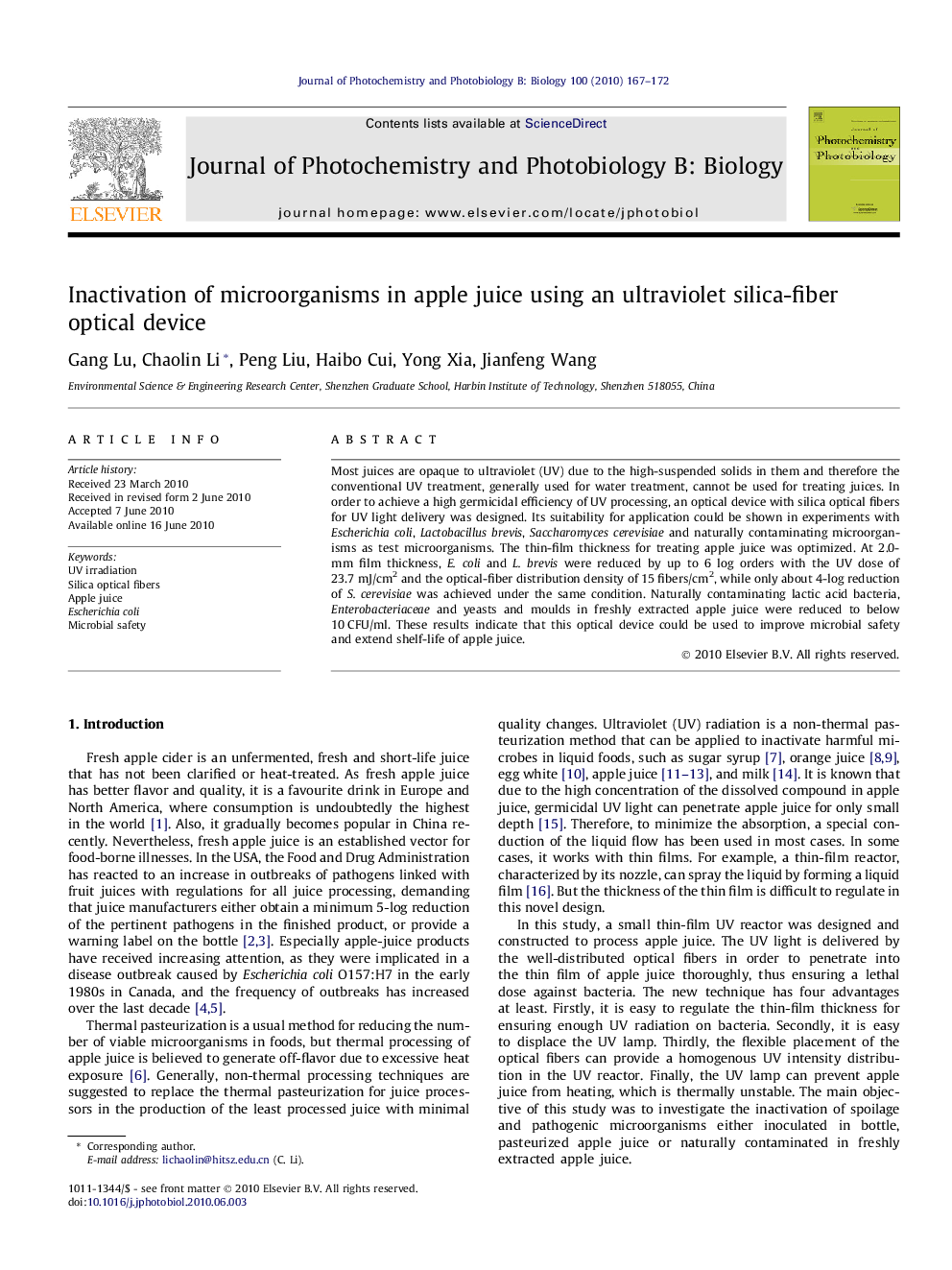| Article ID | Journal | Published Year | Pages | File Type |
|---|---|---|---|---|
| 31014 | Journal of Photochemistry and Photobiology B: Biology | 2010 | 6 Pages |
Most juices are opaque to ultraviolet (UV) due to the high-suspended solids in them and therefore the conventional UV treatment, generally used for water treatment, cannot be used for treating juices. In order to achieve a high germicidal efficiency of UV processing, an optical device with silica optical fibers for UV light delivery was designed. Its suitability for application could be shown in experiments with Escherichia coli, Lactobacillus brevis, Saccharomyces cerevisiae and naturally contaminating microorganisms as test microorganisms. The thin-film thickness for treating apple juice was optimized. At 2.0-mm film thickness, E. coli and L. brevis were reduced by up to 6 log orders with the UV dose of 23.7 mJ/cm2 and the optical-fiber distribution density of 15 fibers/cm2, while only about 4-log reduction of S. cerevisiae was achieved under the same condition. Naturally contaminating lactic acid bacteria, Enterobacteriaceae and yeasts and moulds in freshly extracted apple juice were reduced to below 10 CFU/ml. These results indicate that this optical device could be used to improve microbial safety and extend shelf-life of apple juice.
